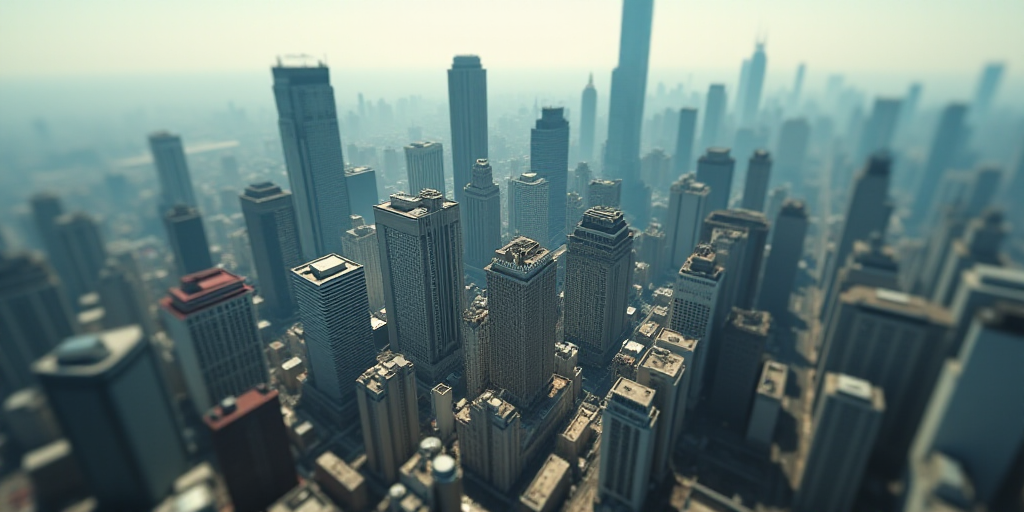Background and Context
The implementation of “Bando 1,” a strategy by the Mexico City government to curb gentrification and expand social housing, has sparked concerns from the private sector. The Association of Real Estate Developers (ADI) argues that certain aspects of the plan, led by Mayor Clara Brugada, could distort the market and discourage investment in new housing projects. The root of Mexico City’s housing crisis, however, lies in the declining construction rates that have plagued the industry for several years.
The Precedent: Bando 2
Bando 1’s emergence has reminded many of its predecessor, Bando 2, which was enacted during Andrés Manuel López Obrador’s tenure as mayor. Leopoldo Hirschhorn Cymerman, president of Canadevi in the Valle de Mexico, recalls that during Bando 2, the city built around 20,000 homes annually. However, construction has since dwindled, with only 3,500 homes completed last year.
Hirschhorn Cymerman also points out that, contrary to the slow pace of development, Mexico City’s population continues to grow. With 25,000 marriages registered in 2024 and over 70,000 students graduating each year, the demand for housing will only increase. He adds that Bando 2 pushed development towards the city center, but it required more investment in infrastructure.
“Bando 2 Worked”: Encinas
Alejandro Encinas Rodríguez, Secretary of Urban Planning, Territorial Ordering and Metropolitan Coordination, maintains that Bando 2 was successful. It facilitated the repopulation of central areas and controlled urban sprawl into conservation lands.
Encinas states that during López Obrador’s six-year administration, over 130,000 homes were built in Mexico City—the highest number in this century. He acknowledges the stigma surrounding Bando 2 but insists that it functioned effectively.
Encinas clarifies that the upcoming Bando 1 regulations will apply city-wide, including Norma 26, unlike its pilot program’s limited scope.
Gentrification and Social Housing
Carlos Mackinlay Grohmann, General Director of Servicios Metropolitanos (Servimet), emphasizes that Bando 1 is crucial in combating gentrification and unethical practices within the real estate sector.
Mackinlay Grohmann describes a subtle gentrification creeping through colonias, fueled by private investments and sometimes with public officials’ complicity. He highlights the importance of Norma 26, which aims to develop affordable housing, despite past irregularities.
Since Clara Brugada became mayor until July 2025, Servimet has proposed over 265 projects through Norma 26, representing 21,800 homes—of which more than 19,000 have been approved. However, this program is currently restricted to central alcaldías like Miguel Hidalgo and Benito Juárez, excluding peripheral areas such as Milpa Alta, Iztapalapa, or Xochimilco.
Key Questions and Answers
- What is Bando 1? Bando 1 is a new housing strategy by the Mexico City government aiming to curb gentrification and expand social housing.
- Why are developers concerned? Developers worry that certain aspects of Bando 1, such as rent controls and focused incentives, could distort the market and discourage investment in new housing projects.
- What was Bando 2? Bando 2, implemented during Andrés Manuel López Obrador’s mayoralty, aimed to repopulate central areas and control urban sprawl.
- How successful was Bando 2? Despite criticism, Bando 2 resulted in over 130,000 homes built during López Obrador’s six-year administration—the highest number in this century.
- What is Norma 26? Norma 26 is a crucial regulation for developing affordable housing, though it has faced past irregularities. It has been strengthened with price caps, supportive credits, and anti-speculation measures.
- Where does Bando 1 currently apply? As of now, Bando 1’s benefits are limited to central alcaldías like Miguel Hidalgo and Benito Juárez, excluding peripheral areas such as Milpa Alta, Iztapalapa, or Xochimilco.






